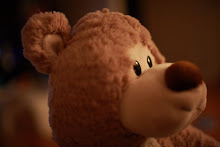In the past years, I've encountered lots of people that needed to take pictures indoors and in low light, and didn't want to use a flash. It may look easy, but it's not really. There is some stuff we need to know about before jumping into the low-light wagon.
First there is the concept of aperture on the lenses (ie. 300mm f2.8). The smaller that f number is, the bigger the "hole" that lets the light pass is. This concept is pretty important in low-light photography.
So by now you probably go like: I'm so buying that 50mm 1.2 lens, but wait! There is another thing linked with a wide aperture, and it's the concept of depth of field. The smaller the number, the thinner the depth of field will get. So getting a nice portrait shot of someone at 6 feets away from you at 1.2 might prove very difficult unless you don't care having one eye in focus and not the other.
So let's jump into a concrete exemple. You are at a show, you want to take your kind on stage with your 135mm f2.0 which is about 30 feet away. Using the calculator (linked below) you have a depth of field of about 3.5 ft, which is a bit too small especially since your kid is moving (let's say). You are at 1/160th of a second and can't really go to f4.0 else it might get blurry.
At this point you have choices. You either can use a flash - kind of disrespectful for other spectators, plus it's normally not allowed - , bump the ISO - and deal with noise later but at least have a sharp picture - or just show the motions a little bit and use a tripod to stop your own hand shake.
Most of the time I find the tripod or monopod use is the best approach, but yours may differ. Hope this post helped you!
J. Enno
External Links:
Depth of Field Calculator
June 29, 2010
Subscribe to:
Comments (Atom)
